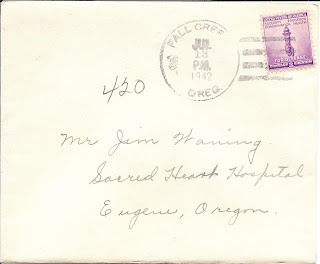A card from Gale Wallace and a note from Agnes McAdam Ingvalson.
Card - Front
Card - Inside
Gale Wallace worked for James Waning from 1954-1958.
Postcard -Front
Postcard - Reverse
Postmarked 6 July 1942 - Blooming Prairie, Minn
"Dear Jim & Marg't,
Letter from Mother W.(1) telling of accident. Sorry to learn about it, but those things seems to happen to the best. Glad it was no worse, but I know it is bad enuf. Hope by this time you are feeling some better.
Good men are hard to find - & I am sure Mr U.(2) misses your help. There's few able bodied men left around here(3) - Nice cool weather & plenty of wet, hard to get fild work done at all. Very quiet 4th here abouts - most people worked. one feels better when busy during these trying times. War news looked bad.
Well look for a card now & then - will be anxious to hear what progress you are making.
My Love,
Aunt Agnes"
1 - Mother W - Jim's mother - Janet McAdam Waning
2 - Mr. U - Jim's father-in-law & employer, Otto Upton
3 - A reference to all the men called up to active duty for WWII






































































